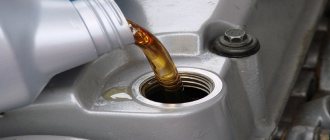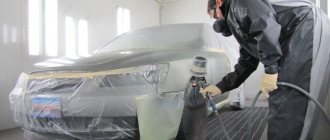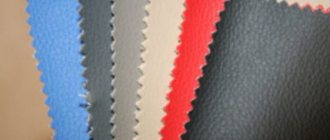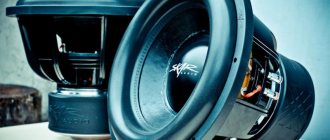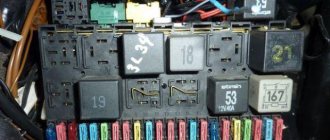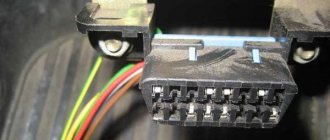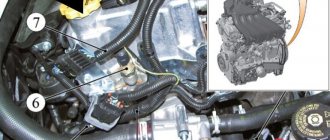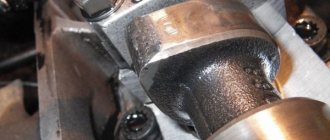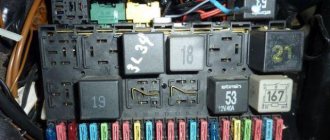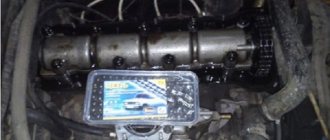The timing drive is a rotating element that combines the crankshaft and camshaft into a single structure. Thanks to this gas distribution mechanism, kinetic energy is obtained - the main driving force of the car.
Polo today is produced in two modifications - “hatchback” and “sedan”, with the former being produced in European countries, and the latter mainly in Russia (near Kaluga). The 1.6 liter engine, the most popular among our motorists, is available in two series: with 8 and 16 valves (CFNB and CFNA - the corresponding markings).
The difference between them in the Polo lies in the design features of the cylinder block. Of course, the unit with the 16-valve version is the most powerful and dynamic. But in order to fully understand whether the Volkswagen Polo has a better drive - a timing chain or a timing belt, it is necessary to consider all aspects.
Chain power units
So, the engine is 105 hp. s, with a volume of 1.6 liters, the Volkswagen Polo is called CFNA.
- It is a 4-stroke, four-cylinder, 16-valve, dual-camshaft power unit.
- Such an engine in a car is located transverse to the longitudinal axis, which is one of its characteristic features. The operating order of the piston group schematically looks like this: 1 – 3 – 4 – 2, while the strokes are counted from the crankshaft pulley.
- The power system, which looks like phased distributed fuel injection, is based on this DOHC scheme. In other words, the fuel mixture enters the cylinders in portions, passing through the chokes, according to the valve timing. At high speeds, the asynchronous (mixed) fuel supply method starts automatically.
- All accessories on the engine are covered with plastic covers, with especially important ones highlighted in the appropriate color. The excellent dynamics of the Polo go well with economical gasoline consumption - it is only 7 liters per 100 km for different driving (highway-city).
- A double timing chain drive on a Polo sedan is several times more reliable and durable than with a profile belt, and accordingly, this also affects the service life of the car. A non-contact ignition system with 4 coils makes it easy to start the engine at any temperature, reducing fuel consumption.
- At the same time, the variable valve timing (CVVT) complex, which changes the closing level of the intake valves, improves fuel combustion, which directly affects reduced emissions of harmful substances.
- The motor is mounted on three support pads, with the main part of the load falling on the side supports, and the third plays more of a compensator role to reduce vibration.
Now on the automobile market you can buy a Polo sedan with a turbocharged reliable TSI engine of 125 hp. s., which has a chain drive. The highest boost can be from 1400 to 4 thousand rpm, while acceleration to 100 km/h is only 9 seconds. The Polo's maximum speed is 200 km/h with a fuel consumption of 5.8 liters per 100 km.
Timing belt drives
In September 2015, at one of the Volkswagen plants located near Kaluga, they produced the first series of an improved EA211 naturally aspirated engine with a volume of 1.6 liters. with timing belt drive.
Before launch, the power unit was tested on Russian roads, was adapted and began to comply not only with their difficult conditions, but also with environmental standards adopted in Europe (Euro-5).
Not only the timing drive was subject to reconstruction, but also the cylinder head, oil pump, piston group, etc. Today, after modernizing the EA111 engine with an installed chain, the Volkswagen Polo received a new EA211 engine, which began to use a timing belt. Moreover, this improvement made it possible to increase the power of the power unit by 5 liters. With. and became 110 liters. With.
How to determine externally a timing chain or belt
On this car, the engine is in transverse design and is called CFNA, and it has two camshafts on top. You can determine which drive is used on the Polo sedan as follows:
- If the Polo has a timing chain drive, then there is a metal casing on it, but if a belt is installed, then it is protected by a plastic cover.
- In addition, you can find out the difference in the timing drive mechanism by engine displacement. The gas distribution mechanism of the Volkswagen Polo with a volume of 1.8-2.0 liters uses a chain, and on power units with a volume of 1.6 liters or less, a timing belt is used.
- You can also judge the timing drive by the car's production date and engine markings. On Focuses released before 2015, an EA111 series motor with a chain drive was installed, and on later models, power units numbered EA211 were installed, and they use belts instead of a chain.
However, Volkswagen allows the production of the Polo sedan with a volume of 1.6 liters in two versions: with chain and belt drive. It depends on what kind of engine it is - naturally aspirated or turbocharged.
Engine Volkswagen Polo sedan 1.6 105 hp Manual transmission5 (automatic transmission6)
- Working volume – 1598 cm3
- Number of cylinders/valves – 4/16
- Power hp/kW – 105/77 at 5600 rpm
- Torque – 153 Nm at 3800 rpm
- Maximum speed – 190 (187) kilometers per hour
- Acceleration to the first hundred – 10.5 (12.1) seconds
- Fuel consumption in the city – 8.7 (9.8) liters
- Fuel consumption in the combined cycle – 6.4 (7.0) liters
- Fuel consumption on the highway – 5.1 (5.4) liters
- Brand of fuel used – AI-95
Which drive on the Polo is better?
To answer this question, you need to take into account several factors that influence the demand for a car with a particular drive. Namely:
- lifetime;
- the cost of the drive unit and its replacement;
- driving conditions;
- reliability of replaced parts;
- comfort;
And if we consider a timing chain drive, then we need to take into account the number of rows of this product. Double-row chains last twice as long as single-row chains.
According to the reliability of parts
The timing chain can easily withstand overloads and is suitable for driving in difficult conditions in any climatic regions of our country. Compared to a belt drive, the chain mechanism has its advantages:
- Resistant to oil and high temperature.
- No stretching under excessive loads: chain links do not jump over gear teeth (with appropriate tension).
- Neutrality to weather influences: this timing element is not afraid of moisture in an oil environment, frost and temperature changes.
And also the wear resistance of the component parts, which largely depends on the manufacturer, has a great impact on the duration of the drive operation.
By service life
Representatives of the Volkswagen company state that the life of the chain is designed for the entire life of the Polo sedan. Dealers say that the timing chain and drive accessories need to be changed after 170–190 km. And experienced motorists recommend updating it after a mileage of 90–120 thousand km. And this is associated not with the end of the resource, but with its stretching. Although it is insignificant, but still, the lengthening of the chain links affects the phase shift of the piston group, which leads to a drop in engine power.
Cost of replacement and spare parts
The main criterion when choosing a timing drive is the power of the power unit and the price segment of the mounted accessories. As a rule, the lowest budget option includes Polos with installed belts, while in the middle and high price segment, chain drives are used on the engines. Polo sedan engines have their advantages and disadvantages. Undoubtedly, on the EA211 motor, replacing the timing belt is required more often than the chains on the EA111 motor drive. But we must not forget that changing a belt is much easier and cheaper than changing a chain in a gas distribution mechanism.
It is necessary to promptly replace the timing belt on a Volkswagen Polo. If a break occurs, the engine will be seriously damaged and may require repair. You should be especially careful when choosing spare parts - the durability of the motor depends on this.
This car is quite popular, because all the spare parts available for it are represented by many manufacturers. There are original parts and analogues on the auto parts market.
They differ in quality and durability. If possible, the choice should be made in favor of original parts. This will save money on additional repairs and extend the service life.
Consequences of untimely replacement of the timing belt and other components:
- the roller begins to slip, and over time the “tensioner” ceases to cope with its task;
- the engine overheats - which can lead to boiling of the coolant;
- the belt stretches and breaks.
Parts for Volkswagen Polo differ in price primarily depending on the manufacturer. Before purchasing new timing components, you should make sure that it is available on a particular engine.
Since 2015, Volkswagen Polo began to be produced with a drive chain instead of a belt. Accordingly, replacement is required much less often. The components are also slightly different. Determining the type of motor is quite simple:
- the belt was installed on cars manufactured since November 2015;
- the chain is used in VW Polo sedan cars produced from 2010 to 2015 - with special letter designations (CFNA - 105 hp, CFNB - 95 hp).
Replacement must be carried out immediately of all parts of the belt mechanism. The list includes the following:
- tensioner roller;
- the drive belt itself;
- bypass roller.
Article numbers of original parts:
- Tensioner pulley – VW Polo with CFNA 105 hp engine. - 03C145299C;
- bypass roller – VW Polo with air conditioning and CFNA 105 hp engine. - 1J0145276B;
- original belt - for VW Polo sedan with air conditioning - 6Q0260849E.
Cost of parts:
The best solution is to replace it with original parts. But their cost is sometimes 2-3 times more than their analogues. It is possible to carry out the repair process yourself, but it is difficult. In addition, you will need an assistant.
You can find out how much repairs cost on the Internet. The cost again varies dramatically between official dealerships and private service companies. Current price for spare parts depending on the manufacturer:
| the name of detail | If without air conditioning, article number | Cost, rubles | If with air conditioning, article number | Cost, rubles |
| VAG poly V-belt | 6Q0 903 137 A | 1500 | 6Q0 260 849 E | 1900 |
| Analogue from Contitech | 6PK1090 | 700 | 6PK1733 | 750 |
| Analogue from Gates | 8653-10196 | 750 | 8653-10378 | 1050 |
| Analogue from Bosch | 1 987 948 381 | 800 | 1 987 948 496 | 650 |
CFNA motor problems
The main problem with the CFNA 1.6
is
knocking when cold
. At first, the knock of the pistons on the cylinder walls manifests itself as a slight tinkling sound in the first minutes after a cold start. As it warms up, the piston expands, pressing against the cylinder walls, so the knocking noise disappears until the next cold start.
At first, the owner may not attach any importance to this, but the knocking progresses and soon even the inattentive car owner realizes that there is something wrong with the engine. The very appearance of a knock (impact of the piston on the cylinder wall) indicates the beginning of the active phase of engine destruction. With the arrival of summer, the knocking may subside, but with the first frost, CFNA will begin to knock again.
Gradually, the CFNA engine knocking “when cold” increases its duration, and one day, it remains even after the engine has warmed up.
Engine knock
The knock of the engine piston on the cylinder wall occurs when the pistons are repositioned at top dead center. This becomes possible as a result of wear of the pistons and cylinder walls. The graphite coating of the skirts quickly wears down to the piston metal
Significant wear occurs in places where the piston rubs against the cylinder walls.
Then the metal of the piston begins to hit the cylinder wall and then scuffing occurs on the piston skirt
And on the cylinder wall
Despite the large number of complaints, the Volkswagen concern over the years of production of the CFNA engine
(2010-2015) never declared a recall. Instead of replacing the entire unit, the manufacturer performs
piston group repair
, and even then only if you apply under warranty.
The Volkswagen group does not disclose the results of its research, but from the scant explanations it follows that the cause of the defect
supposedly consists
in poor piston design
. In case of a warranty claim, service centers replace standard EM pistons with modified ET ones, which supposedly should completely solve
problem of piston knocking in cylinders
.
But as practice shows, overhaul of the CFNA engine is not the final solution to the problem.
and half of the owners again complain about the appearance of engine knocking, after several thousand km. mileage The other half of those who have encountered knocking from this engine try to sell the car as soon as possible after major repairs.
There is a version that the real reason for the rapid wear of the CFNA engine may be chronic oil starvation caused by low oil pressure. The oil pump does not provide sufficient pressure when the engine is running at idle speed, so the engine is regularly in oil starvation mode, which leads to accelerated wear.
Resource
Polo Sedan engine life declared by the manufacturer
is 200 thousand km, but traditionally naturally aspirated 1.6 liter engines produced by Volkswagen should run at least 300-400 thousand km.
A defect such as piston knocking when cold makes these figures irrelevant. The Volkswagen group does not disclose official statistics, but judging by the activity on the forums, 5 out of 10 CFNA engines begin to knock at mileage from 30 to 100 thousand km. There are also known cases of defect manifestation on runs of less than 10 thousand km.
However, it should be noted that there have been no cases of a jammed CFNA motor. This is probably due to the fact that the knocking progresses gradually and gives time to make a decision about repairing the engine or selling the car.
Among the large number of complaints about knocking, there are isolated reports of successful long-term operation of an engine that has a knocking noise when cold, which supposedly does not progress and does not bother. Unfortunately, such reports are not confirmed by video recordings and, most likely, it is not the pistons that are knocking, but the hydraulic compensators. According to reviews from car owners whose engines began to knock for real, it soon becomes impossible to ignore this knocking. The ringing becomes so loud that “it’s embarrassing to stand next to the car” and “it can be heard from the 7th floor balcony.”
CFNA Engine Replacement
If the car is under warranty, the manufacturer performs free warranty repairs, replacing standard EM pistons with modified ET ones. The cylinder block and crankshaft can also be replaced, but these expensive parts are not always replaced under warranty.
CFNA engine
equipped
timing chain drive
, and the chain tensioner does not have a reverse stop. There are no recesses on the pistons here either, so
chain break/jump
leads to "Armageddon" -
the motor bends the valve
. The steel chain is designed to provide higher service life and reliability compared to a belt drive. In fact, the timing chain of this engine stretches quite quickly and requires replacement at 100 thousand kilometers.
The chain tensioner does not have a backstop and works only due to oil pressure, which is pumped by the oil pump and appears only after the engine is started. Thus, the chain tension occurs only when the engine is running, and while the engine is turned off, the stretched chain can move along with the tensioner.
In this regard, it is not recommended to park the car with the gear engaged,
But
without parking brake.
When starting the engine, the stretched chain on the camshaft gears may jump. In this case, the valves may encounter the piston, which leads to expensive engine repairs.
Over time, during operation, the standard CFNA exhaust manifold cracks and the car begins to growl loudly. It is advisable to replace the exhaust manifold free of charge, before the end of the warranty, otherwise it will either have to be replaced (for 47 thousand rubles) or welded (as in the photo), which will be cheaper.
What are the dangers of a worn chain?
Driving with a worn timing chain is fraught with serious consequences. Of course, a chain is not a belt, and it is unlikely to break, but with a certain degree of wear, it may well jump off the sprockets. Then the pistons will collide with the valves, which will lead to deformation of the latter. The pistons and cylinders will also be damaged, and the car will have to undergo a major overhaul. In addition, after a certain period of time the chain will certainly stretch, and it will also have to be replaced. In order not to forget when the chain was last replaced, you can put a sign under the hood with the corresponding inscription.
But what symptoms will indicate wear of the chain drive:
- the car no longer starts immediately;
- when the engine is turned on, extraneous noises are heard;
- the car began to consume much more fuel;
- engine power has decreased.
If one of these symptoms is detected, you should pay attention to the condition of the chain transmission. Of course, there may be other reasons, but chain wear is still quite likely.
Every car enthusiast can carry out repairs of this complexity. Of course, you can contact specialists. But such repairs are not cheap. This is, firstly, and secondly, by personally replacing a chain drive, you gain experience, which is so necessary for those who want to work on their car.
If you decide that you will change the chain yourself, then stock up on everything you need. Go to the store and buy new supplies there. In addition to the chain itself, you will most likely have to replace the tensioners and dampers. Prepare the necessary equipment for repair:
- jack;
- spanners;
- set of heads;
- screwdrivers with different types of tips.
Now that everything is ready, you can proceed directly to the repair. Don't forget about safety precautions. Remember that it is very easy to injure yourself or even hurt yourself when making this type of repair, so be careful.
Tools and materials
Replacing the timing chain is within the power of every car owner. For those who do not want to get their hands dirty, excellent advice would be to take the car to a car service center and leave it in the hands of qualified specialists. Please note that this service in service centers is quite expensive. Well, for those who want to repair their own car with their own hands, you should stock up on patience and some materials.
| Name | Articles | Average price, rub. |
| Chain (original) | 03C109158A | 4 000 |
| Sealing ring | 038 103 085 E | 1 300 |
| Pad | 03C109287G | 1 200 |
| Change if necessary: | ||
| Guide (tensioner side) | 03C 109 509 P | 850 |
| Guide | 03C 109 469 K | 500 |
| Chain tensioner | The article number depends on the year of manufacture of the car | 1 000 |
To replace the chain with your own hands, almost everything is ready, all that remains is to take the auxiliary tools. Such as:
TORX head T20;
The process of replacing a chain drive without the involvement of specialists
Typically, replacing a chain drive takes 4-5 hours. Of course, everything here will depend on the level of training of the car enthusiast. So let's begin.
- We install the car on the overpass.
- We remove the protection from the engine.
- We de-energize the car by disconnecting the left terminal from the battery.
- We remove the air intake.
- Now pay attention to the camshaft casing. There is a ventilation hose on it. It needs to be removed.
- We also remove the non-return ventilation valve.
- The oil separator is bolted to the cylinder block with two bolts. Unscrew them and remove the oil separator. The pipe must be routed through the hole.
- Remove the auxiliary drive.
- The refrigerant must now be removed from the air conditioning system.
- Pay attention to the clamps of the air conditioner wiring harness block. You need to press on them and remove the block by slightly pulling it in your direction.
- We remove the high and low pressure pipelines. The holes formed in their place must be plugged immediately. Be sure to do this, otherwise dirt will get into the system.
- We also remove the air conditioning compressor. To do this you will have to unscrew 3 bolts.
- We also remove the compressor bracket. It is also secured with three bolts.
- Now you need to drain the oil from the engine system.
- We dismantle the flywheel shield.
- Remove the oil sump. This is where you will have to tinker, since you will have to unscrew as many as 20 bolts.
- The oil pan will also have to be removed. He may not give in the first time. To remove it, you need to make uniform blows with a hammer along the entire perimeter.
- Now we take the mounting blade and use it to fix the crankshaft so that it does not rotate. Unscrew the bolt that secures the crankshaft pulley. We remove the pulley.
- Drain the antifreeze.
- Now we remove the pulley of the pump that supplies coolant to the system.
- We remove the power unit using a lift.
- Remove the suspension support bracket, which is located on the right.
- Now remove the chain drive cover. Don't forget to remove the gasket. Assess her condition. It may also need to be replaced.
24. Mark the location of the chain drive and gears on the shafts. 25. Press out the chain tensioner and fix it in this position. 26. Remove the chain tensioners, having first unscrewed all the necessary bolts. 27. Remove the shoe, and after it the chain itself.
Assembly procedures should be carried out in reverse order. Be sure to check the engine operation. If uncharacteristic noises are heard, it means something was done incorrectly and the procedure will have to be repeated.
What is required to complete the work
Volkswagen Polo owners should start replacing the timing belt by preparing the following simple tools:
- wheel wrench;
- a set of wrenches (open-end, socket, ring);
- hexagon 5;
- flashlight;
- jack.
In addition, some preparations should be made with the vehicles themselves. It will need to be placed on the most level platform with the hand brake and the wheels securely secured using safety chocks.
Video
Driving with a worn timing chain can have serious consequences. Unlike a belt, a chain cannot break, but it can slip off due to stretching. In this case, great damage to the power plant structure will be caused. To restore functionality, the power unit will need to be overhauled. To avoid unprofitable troubles, you need to promptly change the timing chain on the Volkswagen Polo sedan 1.6
.
Maintenance frequency
According to the rules of the German automaker, a mechanism part does not require replacement during the entire service life if it is in good condition. Installation of a new circuit is only necessary if it is faulty.
Unfortunately, the quality of roads and other negative factors cause problems even with the most timeless mechanisms. The drive component is stretched as a result of exposure to high loads, aggressive driving style, the use of low-quality components, etc. The consequences of working in such conditions are changes in the distance between the teeth, chain slippage, timing malfunction and engine breakdown.
Why do chains prematurely exhaust their intended resource?
- Due to imperfect design. Engines of global automakers, and VAG in particular, are famous for their design flaws, leading to accelerated chain wear.
- As a result of the use of fuel and lubricants of inadequate quality. Incorrect lubrication of the mechanism participants contributes to accelerated abrasion of the contacting elements.
- Due to frequent idling of the engine. Operation in the city with traffic jams is a common reason for the need to replace the timing chain.
- Aggressive driving with a cold engine. A sudden heavy load on the engine at sub-zero ambient temperatures is detrimental to the participants in the gas distribution mechanism.
Signs of a circuit malfunction Volkswagen Polo sedan 1.6 CFNA and CFNB
The following symptoms will indicate the unsatisfactory condition of the spare part:
- Difficulties starting the internal combustion engine
- The appearance of extraneous noise, knocking, rattling when the engine is running
- Unreasonable excess consumption of fuel
- Misfires
- Deterioration in dynamics during acceleration
- Engine power drop
- The light comes on, indicating an error in the operation of the internal combustion engine.
These signs may indicate other malfunctions of vehicle system components. To determine the condition of the circuit, you need to conduct computer diagnostics of the Volkswagen Polo engine. Due to untimely service calls, the risk of costly replacement of the assembly increases.
Employees of Russian car dealerships recommend replacing the VW Polo sedan chain when the mileage reaches 80-90 thousand km. It is by this time that problems with the part begin to appear - phase shift, which causes a drop in performance by 20-40 hp.
Advantages of a timing chain over a belt
The chain drive, which is used in the popular Volkswagen Polo sedan models in Russia, has a number of advantages over a belt drive:
- Strength not prone to mechanical damage
- Wear resistance resource reaches 100 thousand kilometers or more
- Resistant to temperature changes, the chain does not change characteristics at either low or high temperatures
- Resistant to different types of loads, the chain does not break due to shock and vibration influences
- Resistance to local overloads.
Replacement parts
It is best to entrust the selection of components for servicing the gas distribution mechanism to a competent consultant. When replacing the timing chain of a German car with a 1.6-liter engine, a number of related spare parts are used: tensioner, dampers, oil seals, sealing rings. For the convenience of car owners, there are kits for replacing the main chain, which contain parts corresponding to a specific vehicle configuration. It is not recommended to buy products from third-party manufacturers and select items based on similar external features.
Original VAG components for the timing belt of the Volkswagen Polo 1.4TSI and 1.6MPI sedan have the following catalog numbers:
- 03C109507BA tensioner
- 03С109469 and 03С109509 dampers
- 038103085E crankshaft oil seal
- 03C109287G gasket for valve timing mechanism housing.
The price of the set, taking into account the discount, in the official online auto parts store in Moscow AM-Parts is 6,900 rubles (as of November 2022). Branded parts are also used for engines of other Volkswagen models (Passat, Golf, Jetta, Scirocco, Turan), Skoda and Audi.
How to keep your circuit running
- Periodically check the condition of the circuit and related elements
- Listen to the engine, especially when starting
- Follow the rules for servicing the oil system.
With proper operation, service and repair, the risk of timing chain breakage is eliminated.
The engine timing chain is also “infinite”, “problem-free”, “armor-piercing” - there are thousands of epithets to justify it and all are only positive. Of course, any car salesman will tell you - yes, there’s a chain right there, which means you don’t have to worry about replacements after 100 - 120,000 kilometers, you bought it and what they say - forget it! But is this really so, is it really unwearable, and in the end, what kind of resource does it have? Let's find out...
Needless to say, a chain is definitely better than a belt; in terms of reliability, it seems to have no competition. After all, all elements are made of metal, and as we know, it is much more reliable than rubber, plastic and fabric threads in a belt structure.
Typical malfunctions of the Volkswagen Polo sedan engine and methods for eliminating them
During the operation of the CFNA internal combustion engine, a certain database of characteristic breakdowns of this model has accumulated:
- Damage to the throttle sensor wiring;
- failure of engine mounts;
- malfunction of the fuel injection system;
- failure of hydraulic compensators;
- valve failure PCV valve.
In case of loss of power and increased consumption of fuel and lubricants, it is worth checking the spark plugs
– their appearance can tell a lot:
- Soot deposits indicate an over-rich mixture or late ignition.
- Oil deposits indicate problems in the piston group.
- Red deposits indicate the presence of iron additives in gasoline.
- Electrodes are melted - early ignition.
- Ash deposits come from gasoline or oil additives.
- A damaged insulator indicates detonation; you need to check the knock sensor.
Weaknesses and strengths of the engine If replacing spark plugs does not give the desired result, you should check the pressure level in the cylinders
. To do this, you need to unscrew all the spark plugs and install a compression gauge one by one in the vacated holes. Then use the starter to turn the crankshaft while pressing the gas pedal.
Some maintenance and repair operations are available to most car owners who have practical experience and the necessary tools. If it is not possible to clearly determine the breakdown, the best choice would be the help of professionals.
Mercedes classic – M102 engine. Maintenance and possible malfunctions
The M102 four-cylinder in-line gasoline engine began production back in 1980. Mercedes-Benz has been equipping their W123, W124 and W201 body models with them for 13 years, as well as the Geländewagen class SUV series.
K-151 carburetor idle mode and minimizing CO and CH emissions
Increasingly stringent requirements for the concentration of hydrocarbons in exhaust gases are forcing car owners to think about ways to achieve optimal performance.
Everything you need to know about the K-151 carburetor
Prevention of carburetor breakdowns This type of carburetor is produced by the PeKAR plant to complete ZMZ and UZAM engines with a volume of 2.4 to 2.9 liters.
Change the oil? - Yes, it’s as simple as shelling pears. Especially if you have Kalina.
Regular oil changes in the Lada Kalina engine (however, this applies to any car) are necessary for the normal operation of the unit and extending its service life.
Why did the Solex break down?
A carburetor is the main element of a car's fuel system. It is designed to mix air with fuel in the required proportions and form a fuel mixture supplied to the combustion chambers of the engine.
Why don't some manufacturers supply a chain?
Now, it seems, the question remains: why do some manufacturers not install them, but make belts? It's not practical, is it?
There are several answers:
- It's noise. Whatever one may say, even a perfectly tuned engine with a chain is still noisier than with a belt. Well, try rolling metal and rubber links on asphalt yourself - you’ll understand which is noisier.
- Design feature. The fact is that some engines, for the sake of silence, cannot use a “metal counterpart”, because the belt drive is located outside the engine, that is, it rotates in the air. And so simply taking and fastening metal links will not work.
- There are beliefs that the belt better grips the gears of the shafts, both camshaft and crankshaft. After all, the gear really has wide strips for engagement, but the chain has teeth, and even in oil! No, of course, they also engage very effectively in the hook, and usually there are two rows of them. But as some manufacturers assure, they can jump over a tooth much faster than a belt.
- Well, and actually the last thing – tension. Tensioning a chain mechanism is more difficult than a belt mechanism. After all, the belt bends easily, and is again in the air. But the opponent is in oil inside, and it’s more difficult to tighten him - you can’t bend him as needed!
Some write that the chain mechanism is also more difficult to change, because in reality you need to disassemble almost half the engine, but for the belt drive, you unscrew the casing, remove it and quickly install another one! There is some truth in this, but in any case you will change the belt more often than the chain.
Exhaust manifold problems, configuration errors and mechanical defects
One of the CFNA powerplant's glaring weaknesses is the poor design of the exhaust manifold. The exhaust channels are of different lengths, and the catalyst is located too close to them. As a result, the following difficulties in the operation of the system are observed:
- The exhaust gases from the first cylinder partially enter the second cylinder, which is in the purge stage;
- Similar processes, although to a lesser extent, are observed in the operation of the 4th and 3rd cylinders.
- Problems with the supply of fresh air to the engine are clearly expressed.
- The formation of a mixture and combustion of products is carried out with low efficiency, the fuel is not completely used.
In addition to the indicated disadvantages associated with design features, the CFNA motor has another disadvantage. In some cases, the exhaust manifold cracks between the 2nd and 3rd cylinders. The best option is to replace the collector; even with high-quality welding, the crack appears again after some time.
About engine maintenance
To begin with, I would like to say that the condition of the oil greatly affects the life of the chain. It is located inside, therefore, the better it is lubricated, the more the resource will increase. Also, indirectly, frequent replacement removes from the engine any debris such as sand, dirt, etc., which breaks and wears out the chain mechanism, because sand can penetrate anywhere, including into the connecting links. The new oil makes the pistons slide better, which relieves unnecessary stress on the chain mechanism.
In general, the result is this - to increase the service life, you just need to change the oil more often, at least every 1000 kilometers, but ahead of schedule. That is, the dealer claims 15,000 - change after 13 - 14,000, and ideally after 10,000, then the chain will last much longer.
Step-by-step instruction
A seemingly simple procedure will take a lot of time, effort and require extreme concentration and attention. It includes the following items:
The worn chain can now be removed.
Installation of the new mechanism is carried out in a mirror sequence.
Conventional engines
You know, I caught myself thinking that there is no information anywhere about how long to change the chain mechanism. That is, if you take a regular car, with a regular naturally aspirated engine (not a turbo - more on that below), the resource is often not limited by the manufacturer!
However, you can find the following information:
After a long mileage, about 150 - 200,000 kilometers, it is worth listening to the operation of the engine to see if there is excessive beating and noise. If it does, you need to diagnose the circuit and replace it if necessary.
That is, the main diagnosis is based on sound, and not after a certain mileage. Therefore, the resource varies from manufacturer to manufacturer, and from owner to owner.
However, if you crunch the numbers, you get:
Taking into account long maintenance (approximately 15,000 or more)
The chain lasts about 150 - 170,000 kilometers.
Taking into account short maintenance (approximately 10 – 13,000 km)
The chain can travel from 300 to 350,000 kilometers.
If you take care of your car, then the chain mechanism is really the last thing you change! But wait, my friend changed every 15 – 20,000, what’s the catch? YES in no way, it’s just that your friend has a VOLKSWAGEN engine, that is, a turbocharged one, and a weak one, with a volume of 1.2 - 1.4 liters.
CFNA oil
Engine oil volume: 3.6 l Recommended tolerance: VW 502 00, VW 504 00 The oil must comply with 502 approval, or the alternative 504 approval of the Volkswagen concern. The tolerance is indicated on the packaging, and it can also be checked on the oil manufacturer’s website
Recommended oil viscosity: 5W-40, 5W-30 . The factory fills it with 5W-30 Castrol EDGE Professional LongLife III , but there is an opinion that this brand of oil does NOT provide high engine protection. And certainly, you should not change this oil at intervals of 30 tkm. If you need engine durability, in our country you need to change the oil every 10 tkm maximum .
What kind of oil should I use?
Here are several brands of oil that meet VW 502.00 approval
- MOTUL Specific 502 505
- Shell Helix Ultra Extra 5W-30
- LIQUI MOLY Synthoil High Tech 5W-40
- Mobil 1 ESP Formula 5W-30
- ZIC XQ LS 5W30
